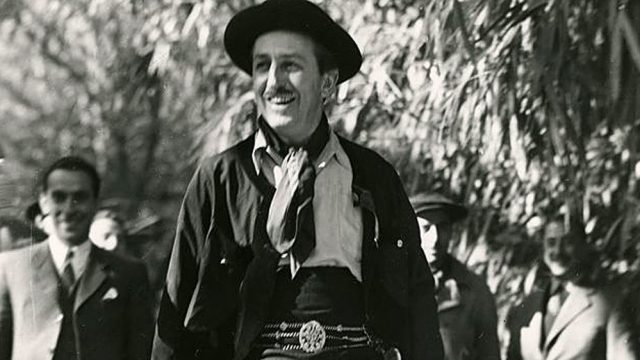People really have no idea how close the Disney studios skirted to bankruptcy for how long. Especially if you only remember them as the media juggernaut they’ve been for the last couple of decades, when everything’s been turning up Disney. I have no idea now how many of the biggest franchises in the world they own now, but I think Walt would have been astounded by the information. Especially if you’d told him about it in 1941, when he was as close to going under as he’d ever get.
Snow White and the Seven Dwarfs had been a phenomenal success. Pinocchio and then Fantasia . . . less so. The studio was running out of money; the staff was going on strike. Walt was desperate. Then as part of Franklin Delano Roosevelt’s Good Neighbor Policy, it was suggested that Walt take a goodwill tour through South America. Walt was a little taken aback by the idea and was adamant that he was not a diplomat. However, when it was suggested that he and a group of people from the studio go through and develop ideas for new films, that interested him. The banks wouldn’t loan him the money, but the government guaranteed it, so off he and a collection of animators, writers, musicians, and so forth went off to Brazil, Argentina, and Chile, with a few side trips on the way home.
How successful the trip was depends, I suppose, on what you think of the finished products—Saludos Amigos and The Three Caballeros. The documentary itself suggests that the problem is that few of the people who worked on them had been on the trip and therefore really got into the spirit of South America. They wanted to make the movies just like any other Disney films. So there’s Donald Duck hitting on women and Goofy learning how to be a vaquero and so forth. And to the annoyance of the Chilean people, the only segment about their country is about a little plane crossing the Andes.
Walt himself apparently knew that would be a problem. However, he also knew that, if you made a movie just about Chile, people from Argentina or Peru wouldn’t go. And if you made a film about Brazil, people from Uruguay or Ecuador wouldn’t go. And so forth—each country’s people were likely to only go see movies about their own countries. So if you wanted a really successful movie, you made it about all the countries. However, that doesn’t leave much time for any given country, and the animators were so taken with Brazil and found the vaquero culture of Argentina so fascinating that there wasn’t much left.
What this movie doesn’t really talk about is the strike. It touches on it a little, but only really from Walt’s perspective. And I know this because it’s awfully sunny about working conditions at the studio without mentioning that they were exhausting. From what I’ve read, conditions at Disney could be not unlike conditions at the tech giants; as things approached deadlines, people were pretty well sleeping at their desks. Though unlike at those tech giants, Walt wasn’t exactly a billionaire at the time—I think the studio’s going bankrupt would have bankrupted him personally as well, though I could be wrong.
The documentary is pretty open, though, about the fact that the trip south was an escape from the studio’s problems. Walt didn’t want to deal with the strike, because he felt personally betrayed. I don’t know enough about it to say; I have read things that skirt around the edges, and it sounds as though Walt’s problem was that he thought of the studio as his personal fiefdom and didn’t have a problem with how uneven things were. He thought he could make things as fair or unfair as he wanted and the radical pay disparity was fair because the money went to his best men.
Though, goodness, the trip made it clear that one of his best “men” was Mary Blair. The movie shows her art and Lee Blair’s from before the trip, and then hers from after the trip, and the art is nearly the same before while hers is radically different after. The trip allowed her to come into her own, which then shaped Disney for decades to come.
Much of the movie is made up of the various letters and diaries from the people who traveled with Disney—they became known as “El Grupo” because bellhops would refer to them as “el grupo Disney” when they were trying to find them. The rest of it is interviews with people from South America, people who have information from the other side. It’s an interesting take, if you’re interested in the personal and political side. If you care about the art, less so.
Apparently, there were a lot of people in South America who believed Walt was a spy, not least because of how much El Grupo’s trip was managed by the various governments involved. However, even more lingering than that is that Walt was cryogenically frozen after his death. We’ve talked about that belief before; it wasn’t just in South America that it’s a popular belief. But the only laugh-out-loud line in the movie is the caption at the end that says he is still not frozen.
I rented this; pay for rentals that interest you by supporting my Patreon or Ko-fi!

